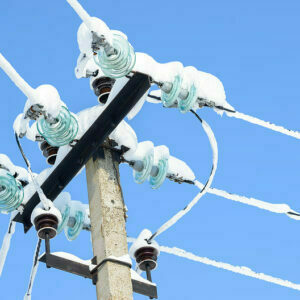Residents of Pennsylvania came close to facing rolling blackouts when winter storm Elliott hit the week of Christmas last year.
The effects of the storm, a “bomb cyclone,” were bad enough. Strong winds and temperatures dropping to 30 below with wind chill resulted in some 108,000 Pennsylvania households losing power.
In response, the state Senate held a hearing Monday to examine what can be done to improve the electric grid and power generation so consumers don’t suffer future blackouts. Representatives from the Public Utilities Commission, industry groups, and the power transmission utility PJM spoke.
Sen. Gene Yaw (R-Bradford) said some witnesses were using “politically correct” language. “I probably won’t be,” Yaw said. Society needs energy to build an economy, and after that, “you can deal with the environment.”
“We’ve been tinkering with the environmental side without considering the economics and operational side,” Yaw argued. Five years ago, the state had a “perfect mix” of natural gas, coal, and nuclear electricity generation. “We did not have reliability issues at all.”
But now there are political pressures to go to green energy. “I think we’re dealing with a lousy deck,” said Yaw.
Asim Haque with PJM, the region’s transmission utility, said a report that came out Friday found older power plants are not being replaced quickly enough with new sources, despite all the focus on green energy generation. As a result, customers face a very real possibility there won’t be enough electricity supply to meet demand.
“Keeping the lights on is PJM’s most important priority,” said Haque. But the mix of power generation is shifting, raising concerns about reliability. The state’s supply is moving from reliable generation sources like gas, coal, and nuclear power to less reliable solar and wind power.
He also sees the demand for electricity increasing with more data centers coming to Pennsylvania and more electric vehicles hitting the roads.
Gladys Brown Dutrieulle with the Public Utilities Commission (PUC) said, “Reliability is the key to replacing aging infrastructure.”
Natural gas provides 53 percent of the power to generate electricity in the state, nuclear energy provides 33 percent, and coal provides 12 percent. Wind and solar make up the remainder.
Diane Holder, vice president of Reliability First, said they work with agencies in 13 states and Washington, D.C. She noted wind and solar are “weather dependent” and better battery storage is needed to make power output from those sources less variable.
She said the country needs more time to transform its energy generation from current methods to renewable energy. There are also “challenges to integrating renewables onto the grid.”
Yaw said the witnesses mentioned 94 percent of new energy coming online was from wind and solar, with only 6 percent natural gas, which is more reliable.
He asked why more natural gas and nuclear plants aren’t being built. “The more we bring (renewables) online, the more we have a problem (with reliability).” More natural gas plants “would help,” he said.
Dutrieulle noted gas plants are more expensive to build and new nuclear plants are even more costly.
Yaw said that while nuclear plants don’t produce emissions, they require “tons of concrete and plastic (to build). There is a carbon footprint to everything.”
“The projections in this study indicate that the current pace of new entry (of power plants) would be insufficient to keep up with expected retirements and demand growth by 2030,” the PJM report said.
Over the past decade, Pennsylvania has benefitted from the supply of natural gas via the Marcellus Shale source. But in the wake of Russia’s invasion of Ukraine and the resulting increased reliance on natural gas around the world, there is more volatility in the market.
Haque added another obstacle to constructing new natural gas power plants: The ESG movement.
“ESG (Environmental, Social, Governance) requirements, impact whether financing can be obtained,” Haque said. Some large financial institutions, such as BlackRock, have adopted ESG stipulations for their investments and won’t fund fossil fuels.
However, “we do assume we will receive new megawatts from natural gas,” he added.
Sen. Carolyn Comitta (D-Chester) picked up on Holder’s mention of a “great transition” to clean energy, noting that fossil fuels would still be needed during that time.
“Things are happening very quickly,” she said.
Haque said fossil fuels are “still essential.”
Rachel Gleason, executive director of the Pennsylvania Coal Alliance, said coal-powered plants stepped into the breach and saved the state from blackouts last winter.
“During winter storm Elliott, it was coal that came to the rescue again,” she said. And “unreliable wind and solar” are being subsidized and they are not required to pay fines if they do not provide the power they’ve promised. Those subsidies distort the energy market, she said.
But Andrew Williams with SolSystems said solar is part of a “comprehensive energy plan.”
“Solar works any time the sun is up,” he said. “Solar performed as needed during Elliott.” And many new data centers have solar panels on their rooftops, he said. But he admitted it will be unlikely that Pennsylvania will rely totally on renewable energy by 2035 as some people would like.
Please follow DVJournal on social media: Twitter@DVJournal or Facebook.com/DelawareValleyJournal

